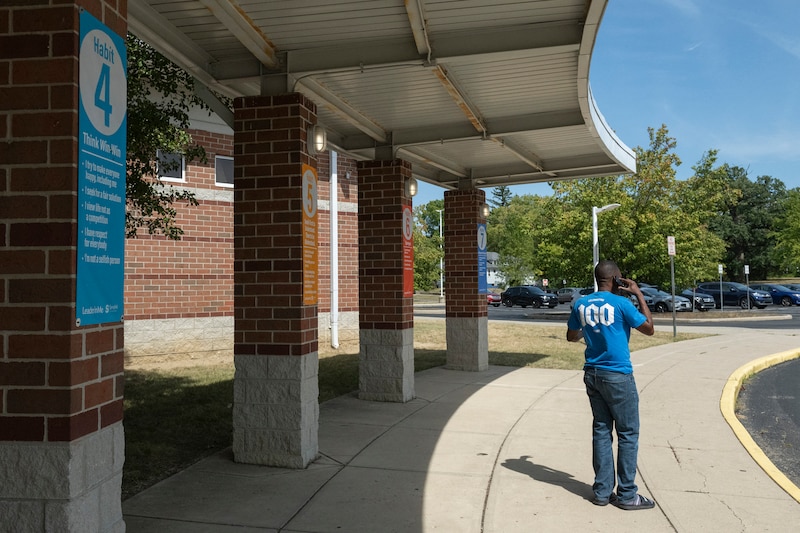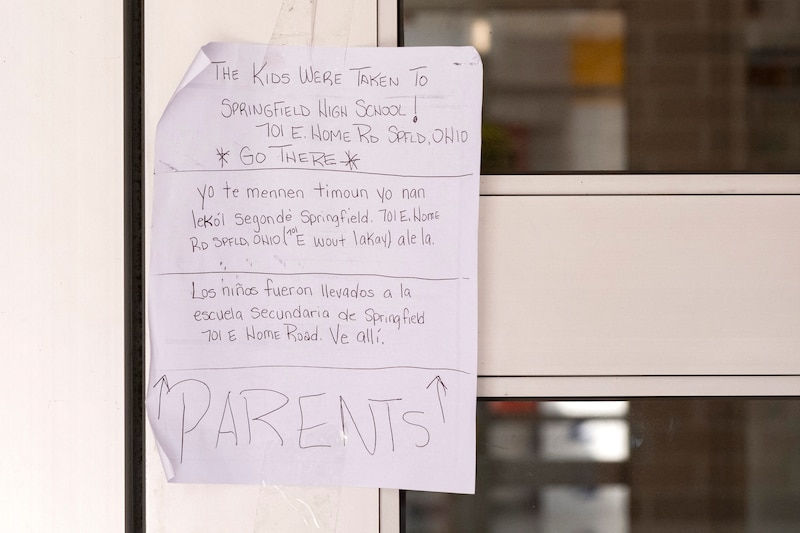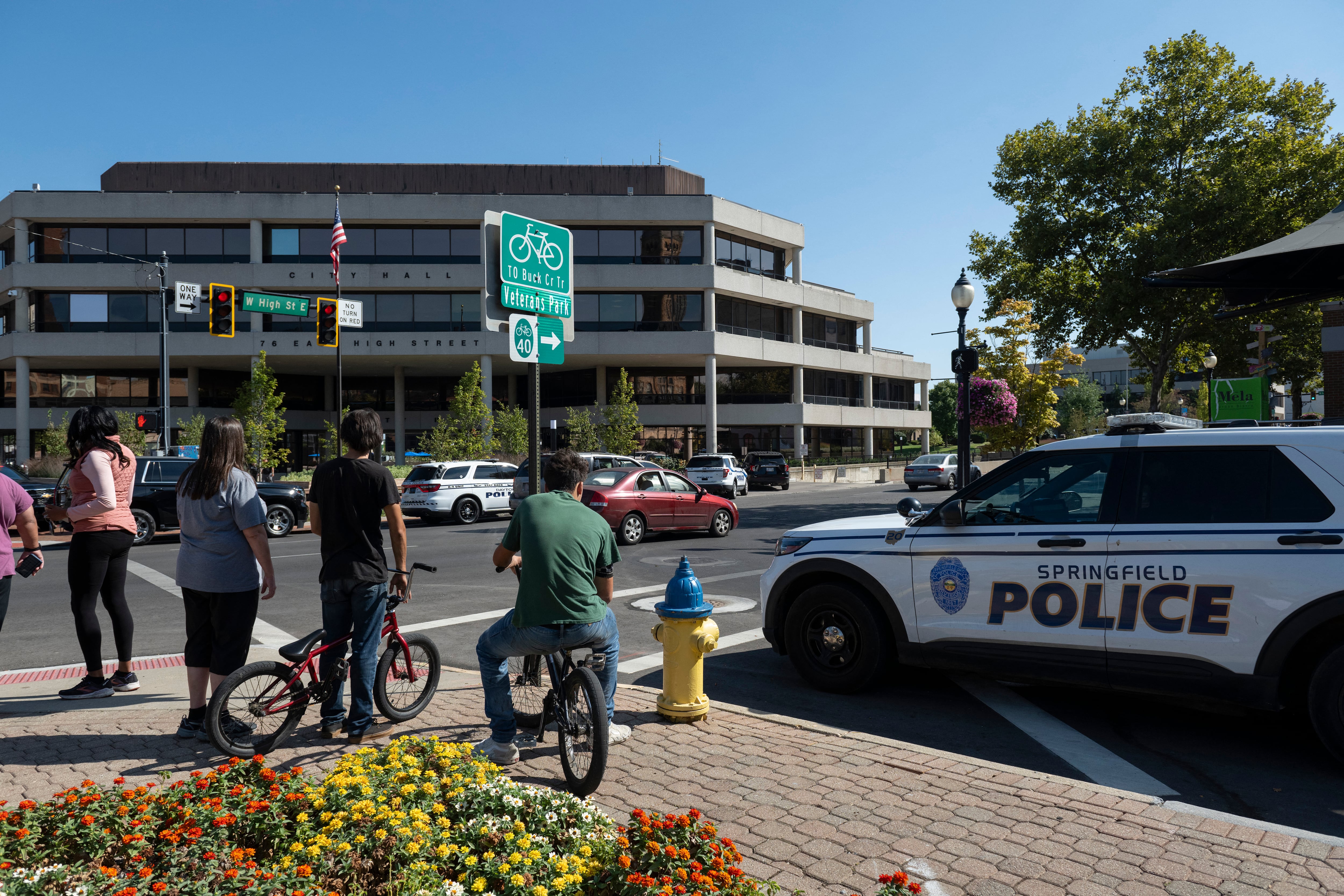Sign up for Chalkbeat’s free weekly newsletter to keep up with how education is changing across the U.S.
Maryse Emmanuel-Garcy came to the U.S. from Haiti in 1970 and enrolled in high school on Long Island in New York state. When she heard her classmates’ comments about Haitian students, she decided to speak up and push back.
“People said that we didn’t speak English, that we were dumb, and that we smelled,” said Emmanuel-Garcy. “I told them what they could do with the soap they gave us.”
She later became a social worker and one of the co-founders of the Haitian Family of Long Island, known as Hafali. As a community leader, a counselor, and through her family and social connections, she knows the hurdles that confront Haitian students and adults and the discrimination they’ve long faced.
Such harassment against her community gained new strength recently, as false claims about Haitian immigrants eating pets in Springfield, Ohio, started to spread on social media. GOP vice presidential candidate Ohio Sen. J.D. Vance amplified the claims, which then exploded when former President Donald Trump repeated them during the presidential debate.
City officials had already debunked the false claim. Nevertheless, Springfield was severely disrupted by bomb and shooting threats after the debate, prompting officials to evacuate schools and other public facilities. Last week, Ohio Gov. Mike DeWine sent state police to Springfield to help restore a sense of security for families and students.
What’s happening in Ohio shows how aggressive and misleading political rhetoric can impact schools. Although bomb threats may grab headlines, harassment, crude insults, and cruel jokes could also strain classrooms and school communities. Emmanuel-Garcy and other Haitian community leaders told Chalkbeat that parents have shared stories of their children being bullied. Some said they are now afraid to send their children to school.
For Haitians and Haitian Americans nationwide, Emmanuel-Garcy said, the situation “is not just a local thing in Ohio.”

It’s not the first time a presidential campaign has created such fears. Researchers and educators have documented how students of Hispanic heritage felt unsafe during and after the 2016 presidential election. That year, a survey by the Southern Poverty Law Center found that more than 67% of teachers reported that students, especially students of color and children of immigrants, expressed concern about what might happen to them or their families after that year’s election.
In several states, Latino students reported harassment and bullying, including variations of “build the wall!” chants and threats of deportation from classmates.
“What we saw is that when political leaders spread hateful content, students feel emboldened to reproduce this speech in the school”, said John Rogers, a professor at the University of California in Los Angeles, who researched political rhetoric after the 2016 election and sees parallels today.
Now, just like eight years ago, that’s put pressure on teachers and education leaders to respond. But responding to that pressure can be complicated.
Stopping bullying, avoiding heated debates can help students
Educators agree that creating a respectful and healthier school environment takes time. But some shorter-term strategies are useful in an emergency. One of them is to reinforce measures against bullying.
“Many of these kids went through so much to get to this country. The last thing they deserve is to be portrayed as uncivilized people who eat dogs and cats,” said Stan Neron, co-executive director of NJ 4 Haiti and vice president of the Board of Education in Elizabeth, New Jersey.
Educators should be assertive in stopping any incidents they witness, experts said. Since most bullying happens outside of adult supervision, schools should also reinforce anti-bullying policies and channels for students to report such incidents.
“There are already laws and rules in most schools. It’s important to remind students of them,” said Shaireen Rasheed, a professor of culturally responsive teaching at Long Island University who’s worked with school districts as a consultant.
In addition, educators should be responsible for clarifying that the allegations about the Haitian community are false.
“These comments burden the Haitian community to clarify and deny these accusations. Even when people are not mean-spirited, we are still impacted by jokes or comments,” said Carrié Solages, a Haitian American state legislator in Nassau County, New York.
Solages has also received reports of bullying and harassment in schools, and dealt with related comments himself.
“People asked me if they could bring a dog to my rally,” he said. “I was able to process the joke, but kids may be more sensitive to it,” he said.

If educators want to bring up the current situation in class, they should be careful about how to lead student discussions about it, said Paula McAvoy, a North Carolina State University professor who has researched how to bring political debates to the classroom.
“Teachers should not pose it as an open question when the information has been debunked. They can say: ‘I know this information is out there, and I know that people you trust are saying it. But in my understanding, it’s not true. In this classroom, we’re not going to treat it as true,’” said McAvoy.
Teachers should help students focus on policy questions, like how the city can better accommodate the influx of immigrants and what policies can be implemented to integrate them with the local population. And while debates may seem like a good way to share different perspectives, McAvoy said that when “students have to defend a specific position, the energy level goes up, and the competitiveness goes up.”
McAvoy suggests having students form groups to discuss solutions based on shared agreements. In McAvoy’s research, 90% of students reported feeling respected during group deliberations, compared with 76% who felt respected during debates.
Bringing Haiti into the classroom curriculum
Students should also study Haiti itself, Rasheed said. It can help for schools to host families and community members to talk about the country.
“It’s important to know the beautiful history and culture Haiti has,” Rasheed said.
Focusing on different countries’ cultures and histories — as well as various immigrant communities — in classes can make students more open to diversity, she noted.
Haiti was the only country in the Americas that achieved independence through a successful rebellion of enslaved people. The U.S. and Haiti also have a strong and controversial historical connection; for much of the 20th century, the U.S. military occupied Haiti.
Recent violence and intense political instability have fueled the most recent wave of Haitian immigration to the U.S.

Then there’s the track record of Haitians in places like Springfield and their effects on the economic climate.
Scott DiMauro, the president of the Ohio Education Association, said the new residents have provided a level of rejuvenation for schools as well as the local economy.
“There are growing pains that go along with this, but the community was trying to come together,” DiMauro said.
Fallout from political rhetoric about Haitian immigrants will linger
Even if the situation calms down and the discussion around Haitian immigration fades from the headlines, the discrimination will likely persist in some form.
“This isn’t going away. It’s not something that will last just a day or a week,” Emmanuel-Garcy said.
Still, there are strategies available to educators that can help foster empathy between immigrant students and their classmates.
Jessica Lander, who taught immigrant students at a high school in Massachusetts, suggested an approach called “Building Bridges through Migration Stories.”
Created by the Re-Imagining Migration Project, it consists of teachers putting students in pairs and having them share migration stories about themselves or their families. Then teachers encourage them to find similarities and differences in these stories.
“It’s the most beautiful thing to read students’ reflections that, even if their stories of migration are from different parts of the world or from different time periods, they are pulling out threads of commonality, finding ways of empathizing with each other and seeing the connections”, said Lander, the author of “Making Americans: Stories of Historic Struggles, New Ideas, and Inspiration in Immigrant Education.”
Extending those types of bonds from two students to school and neighborhood networks can make a big difference. Finding leaders in the school community who can help nurture a welcoming and respectful environment can create a shared sense of responsibility for the school climate, Rogers said.
Principals and other administrators at the district level must also act to ensure a safe environment for all students, especially during times of political polarization, and highlight universal values.
“The most effective way to build trust is for school leaders to spend time with students and families,” Rogers said.
Wellington Soares is Chalkbeat’s national education reporting intern based in New York City. Contact Wellington at wsoares@chalkbeat.org.







